It’s been the longest time coming, but after years of rumours and speculation, the Nintendo Switch 2 has finally been announced. I was able to spend an entire day with the new Nintendo handheld, exploring the hardware and going hands-on with most of the games that were presented in the Nintendo Direct yesterday.
Holding the unit in your hands, it’s obvious that the Nintendo Switch 2 is larger than the original. But at the same time, it being the same thickness as the original Switch makes it really comfortable to hold. The kickstand has been redesigned too and, whilst I didn’t get to play in tabletop mode, it definitely looks more sturdier while also being easier to open and close when compared to the OLED model. The console is also equipped with a USB-C port on the top, so you can keep it charged even when playing it in tabletop mode too.
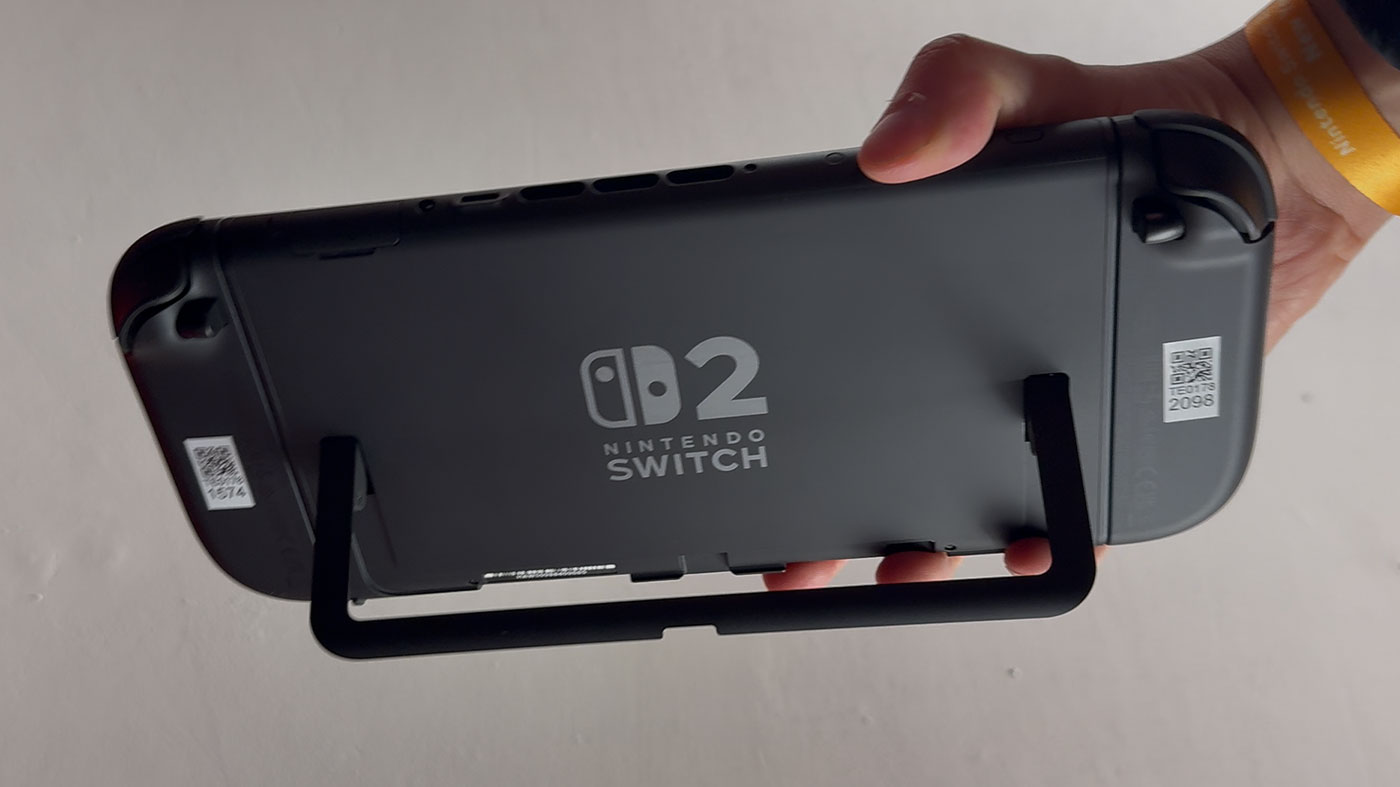
The new screen is the most immediately obvious difference from the previous Switch consoles. It’s a 7.9-inch 120 FPS HDR-compatible LCD display. Given the environment I previewed the console in, and the fact I couldn’t compare side-by-side with the OLED, there are still noticeable improvements to both the resolution and framerate of games running on the Nintendo Switch 2. And while the screen of the Nintendo Switch 2 doesn’t look as vibrant as the OLED console, it still is a lot better than the original Nintendo Switch display.
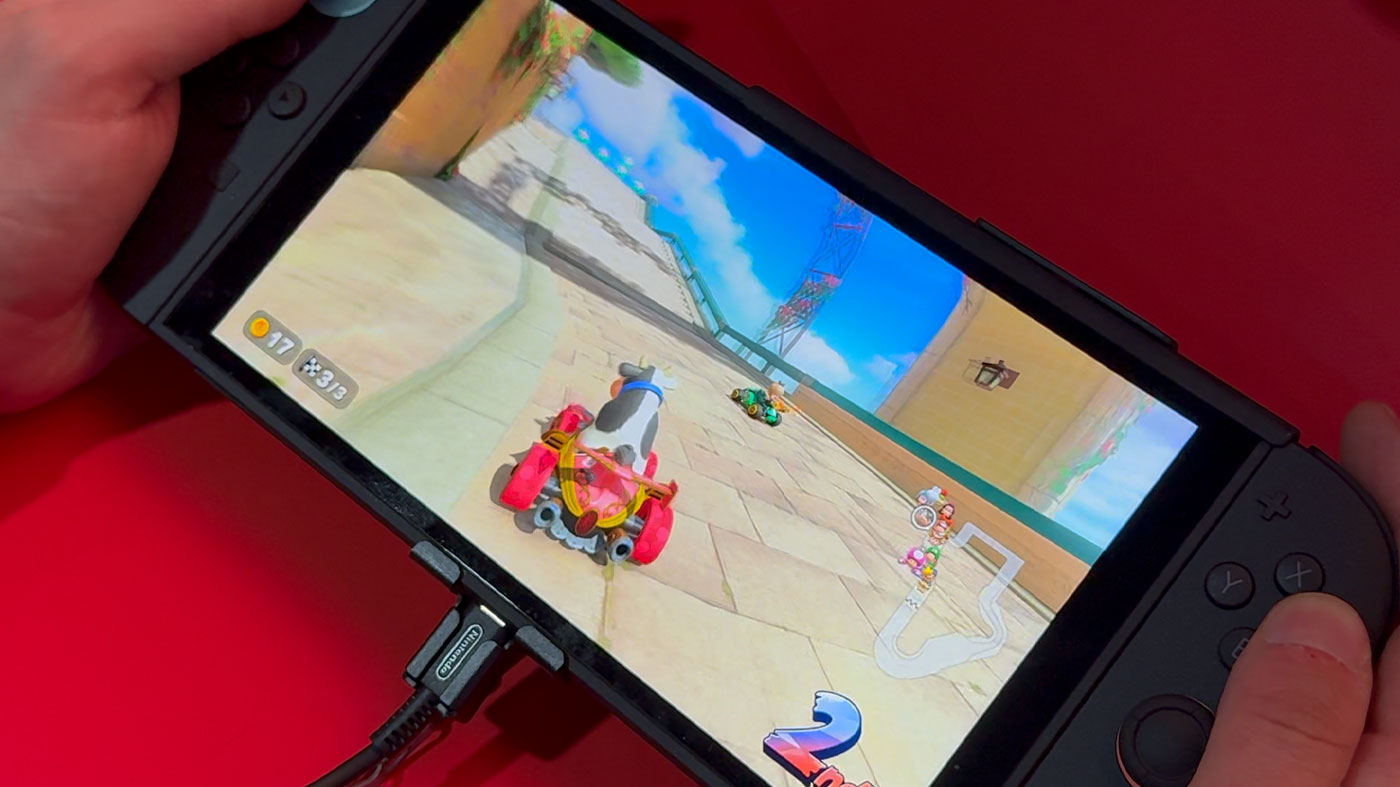
While the console itself is bigger and the screen enlarged, there’s also larger Joy-Con controllers to go with it. These are much more comfortable to hold than the previous Joy-Con, sporting larger analogue sticks which feel better under your thumbs. The shoulder buttons have also been improved here too, lending themselves to what feels like a much more ergonomically friendly Switch.
@shannongrixti I spent an entire day playing the Nintendo Switch 2 and it’s a huge improvement #NintendoSwitch2 #NintendoSwitch #MarioKartWorld #MetroidPrime4 #DonkeyKongBananza #Switch2 #Tech #Gaming
One of the biggest changes with the Joy-Con is that they magnetically connect to the system. It feels a lot more solid than the rails system that the original Nintendo Switch uses, with it being incredibly easy and intuitive to attach and detach the controllers to the main console. They pull off with the press of a button on the back, which itself provides a good amount of resistance so you won’t accidently disconnect them. The SL and SR buttons are also much larger now, which means you’ll no longer need a wrist-strap attachment to use them sideways, which is a huge improvement.
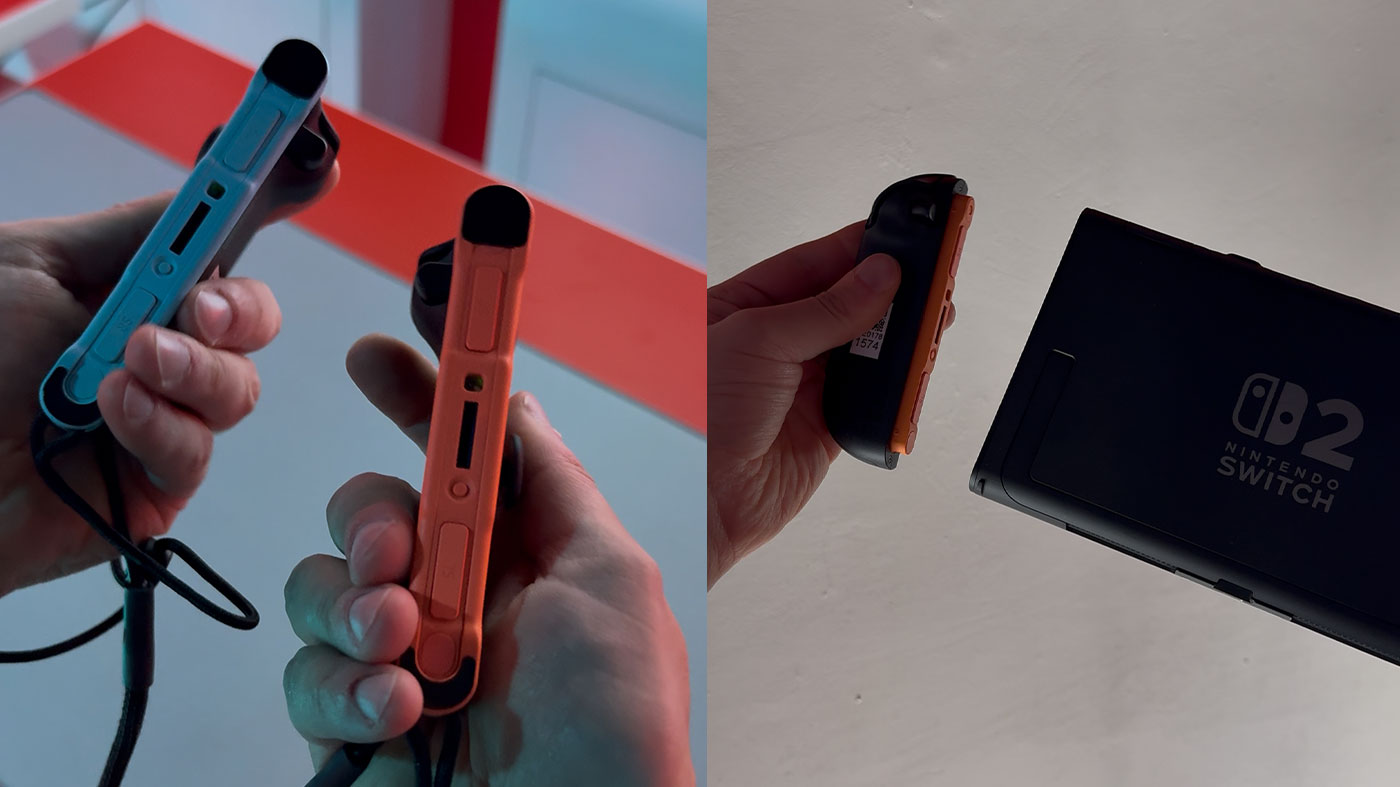
Alongside the console itself, Nintendo has updated the design of the Nintendo Switch Pro Controller as well as the Joy-Con Grip. Both are significantly improved. They both have the new C button implemented in their design for the recently announced GameChat too. Both of these accessories also have programmable back buttons, while the Pro Controller also sports a 3.5mm audio port as well. It’s a little odd, then, that the console itself doesn’t have a similar back button setup, but it also fits the idea of the Pro Controller better so perhaps that’s a moot point.
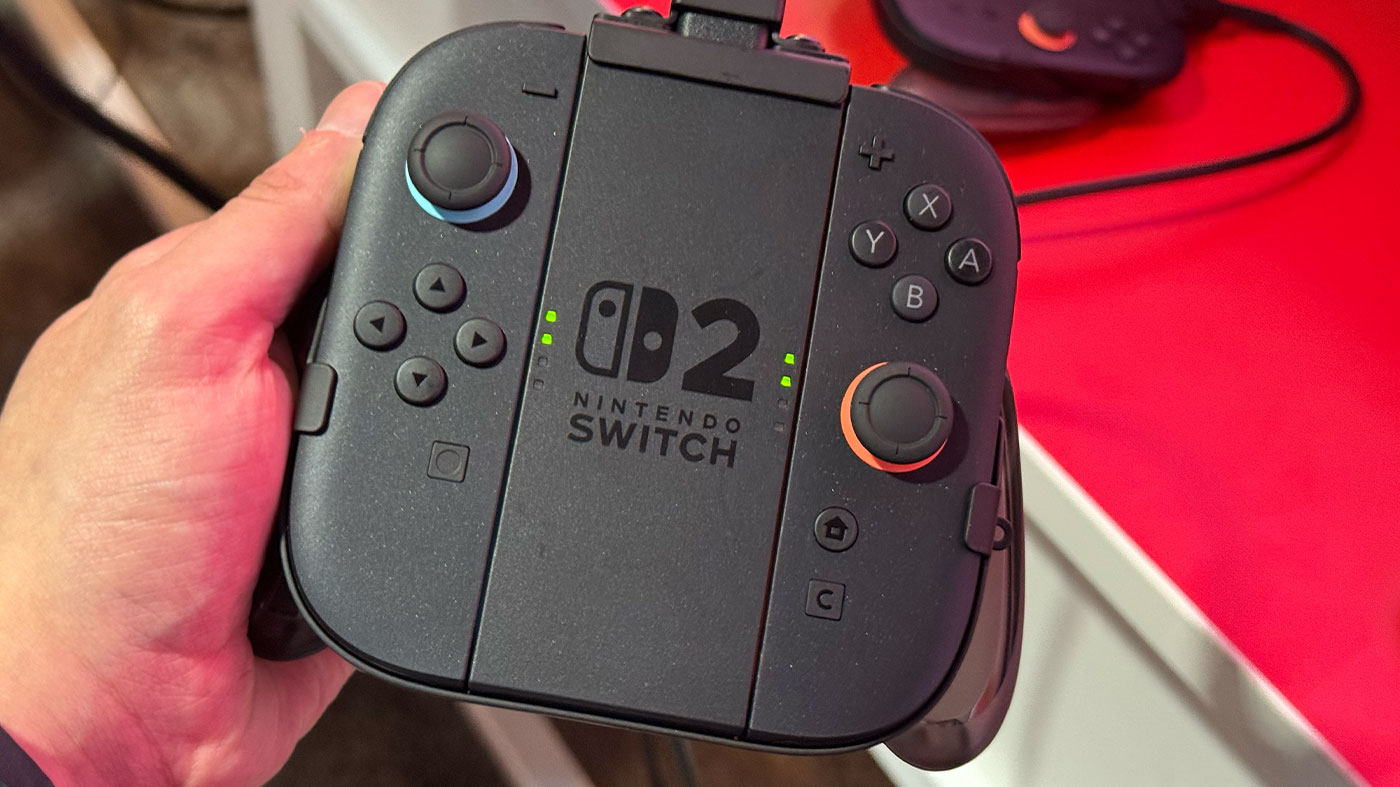
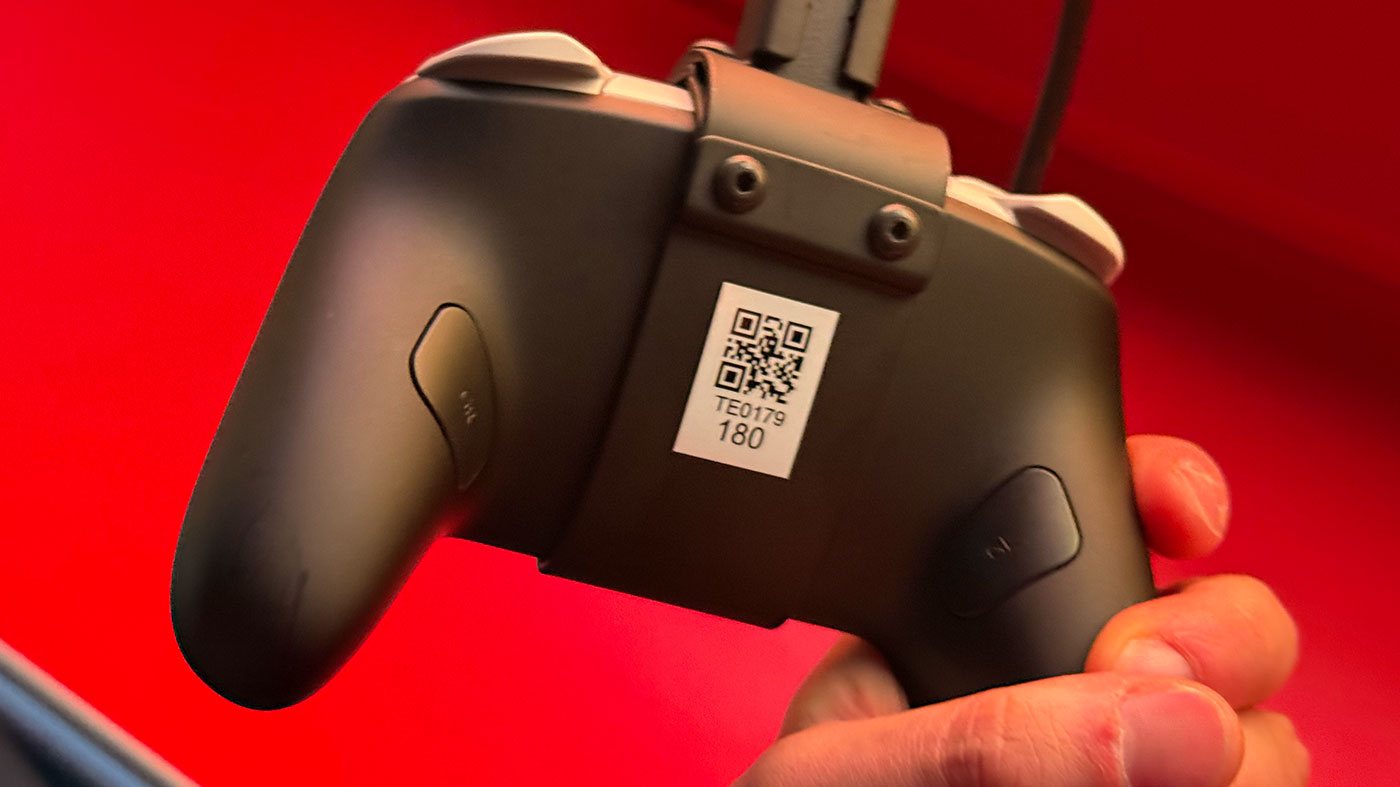
The other major new addition to the Joy-Con is the new moust functionality, which works extremely seamlessly. I tried it out with Super Mario Paty Jamboree + Jamboree TV, Drag X Drive, Nintendo Switch World Tour and Metroid Prime 4: Nintendo Switch 2 Edition. The way the mouse is used is clever and responsive.
Whilst we’ll be doing separate previews for games soon, Jamboree leveraged the mouse functionality of the Joy-Con best with some rather cleverly designed minigames. Drag X Drive has you controlling a wheelchair with both of the Joy-Con side by side too. Welcome Tour allowed you to use the Mouse as a literal mouse too, but Metroid Prime 4 really stole the show for me in terms of mouse support for Nintendo Switch 2.

I remember playing Metroid Prime Hunters with the stylus on the Nintendo DS and this felt similar. Similar in a sense that once I tried playing Metroid Prime 4 with a mouse, going back to analogue controls felt less intuitive. You can seamlessly switch between the two control methods by just putting the Joy-Con down on its side, and it acts as any mouse would act on a typical FPS game on PC. It’s super responsive and, while the environment I was testing in was controlled, I feel fairly confident that it will work on any surface.
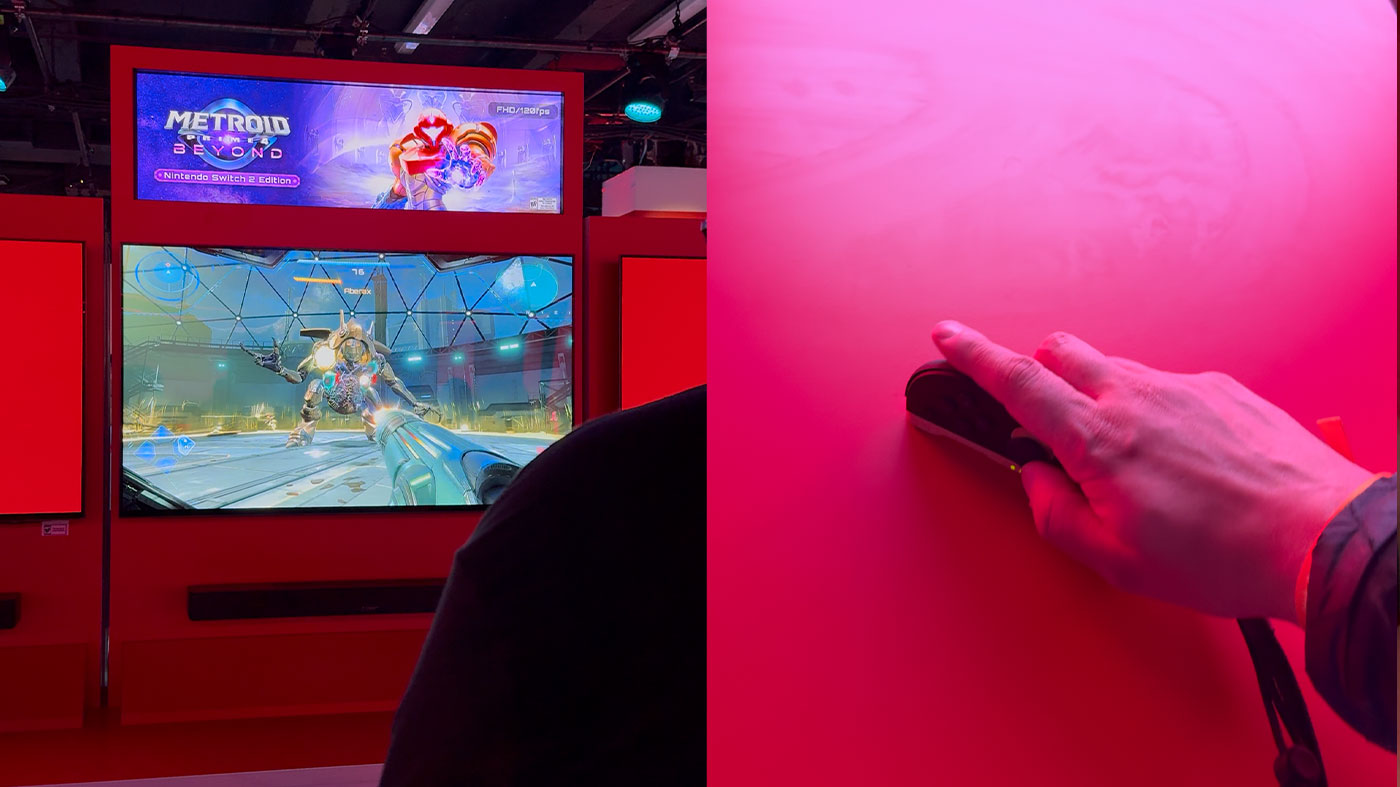
In terms of most of the games, everything I played, whether first-party or third-party, felt like a marked improvement from the original Nintendo Switch. Largely owing to a brand new NVIDIA chip, the Nintendo Switch 2 supports DLSS upscaling which lends itself to some incredible performance results from the system.
Playing both the Zelda games during this event – Breath of the Wild and Tears of the Kingdom – with HDR, improved resolution and framerates does wonders for both games. The battles feel totally different, and even basic functions like scrolling through your weapons feel a lot smoother. While they aren’t brand-new games for the Nintendo Switch 2, they easily represent the best ways to play both of these games.
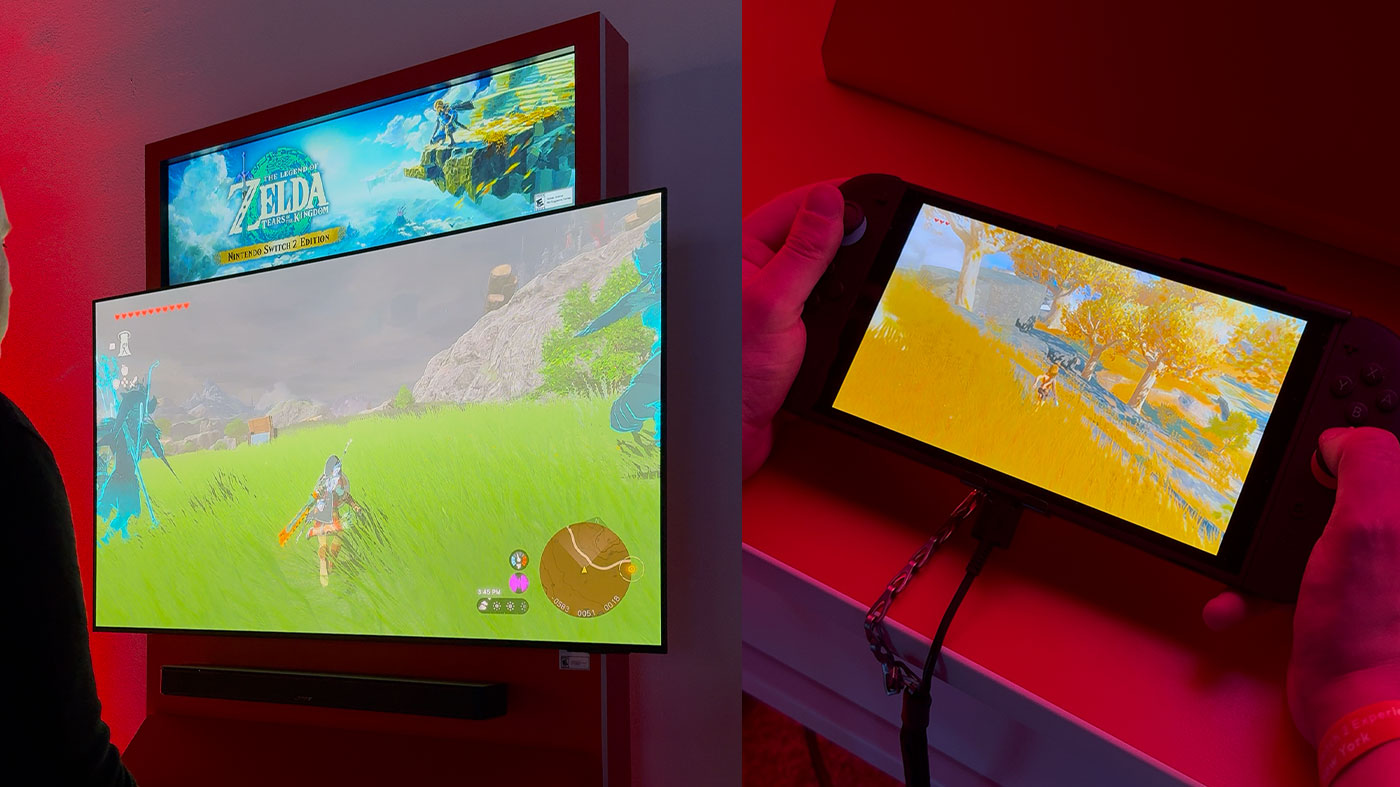
Playing Cyberpunk 2077 on the Nintendo Switch 2 was something I’d never thought I’d type out, but it works incredibly well too. While there’s some obvious downgrades from the other console version, it was still running at a solid framerate which would never be achievable or even possible on the original Nintendo Switch. To think this game is playable on a device that costs this much is nothing short of impressive.
It was Nintendo’s first-party offerings that really stole the show, however. Donkey Kong Bananza, Metroid Prime 4: Nintendo Switch 2 Edition and Mario Kart World all look absolutely phenomenal. Metroid Prime 4 was previewed in the performance mode, displaying at a crisp 1080p and silky smooth 120FPS, sporting a much improved look over Metroid Prime Remastered.
Mario Kart World is using the power of the Nintendo Switch 2 in a different way – upping the ante of the races in practically every way. Not only can you race with an insanely chaotic 24 racers, but the open-world mode does great work in leveraging the power of the new hardware. Donkey Kong Bananza builds on the groundwork laid by Super Mario Odyssey, showing off the power of the new hardware with a level of destructability not seen in a Switch game before.
I really didn’t know where Nintendo might go with software for this console, and whilst we’ve only got a taste so far, it’s clear that the Nintendo Switch 2 will provide further avenues for the developers at Nintendo to really let their creativity shine.
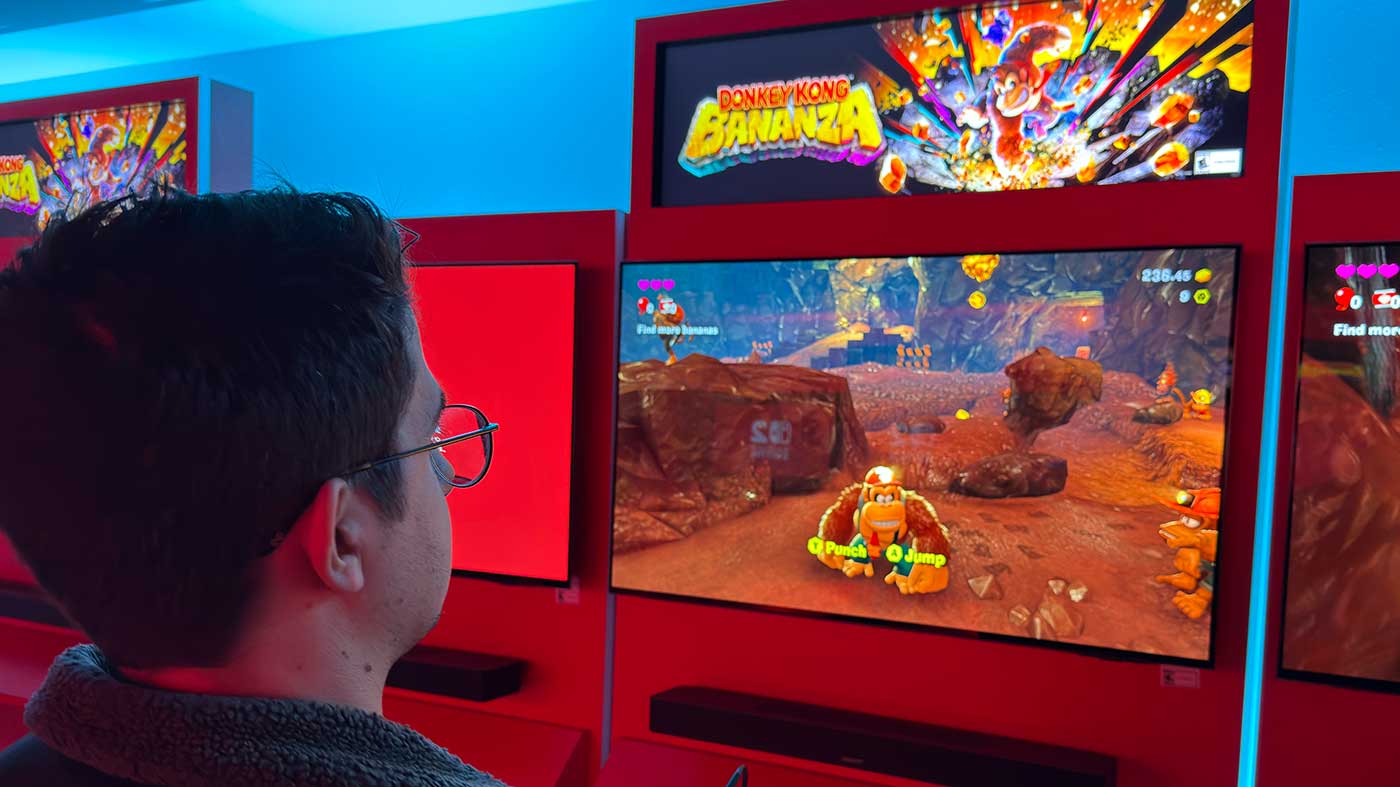
I also was able to try out the Nintendo Switch 2 Camera too, playing a few games of Super Mario Party Jamboree + Jamboree TV with the new peripheral. The easiest way to describe how this all works is to compare it to the PlayStation 2’s EyeToy, in the sense that you’re using physical actions to participate in minigames. You might hit a block with your hand or stack goombas on your head. It adds a level of fun to the already great Super Mario Party Jamboree and it’s a degree of fun that nobody but Nintendo is channeling at this point.
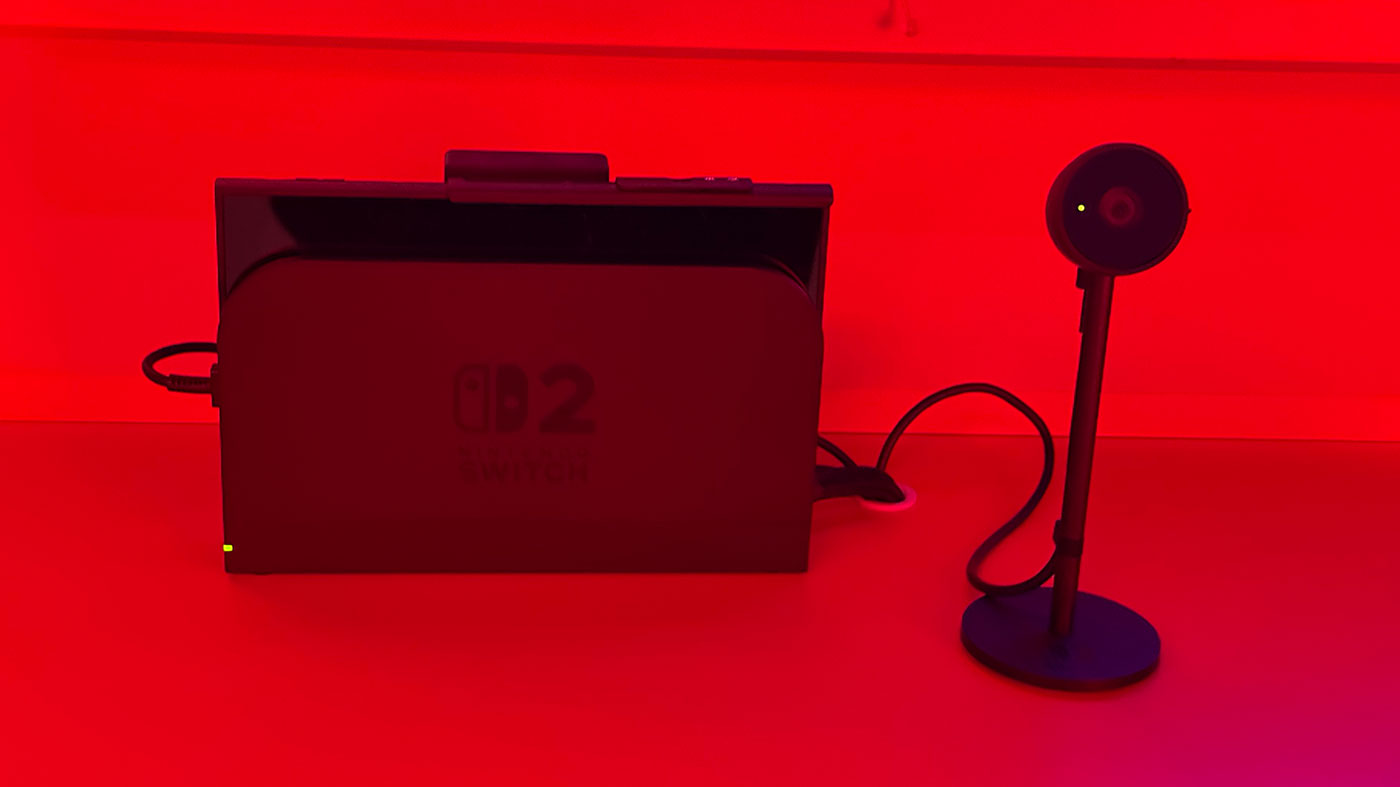
Coming away from my time with the Nintendo Switch 2, it’s hard not to be excited. Not only am I excited that it’s finally here, and in less than two months no less, but it’s encouraging to see how many measured improvements Nintendo has made to the arguably trendsetting design established by the original Nintendo Switch. All of the improvements and creative enhancements to both the hardware and software really help to set this up to be a worthy successor to one of the greatest consoles of all-time. And that’s no easy feat.
The Author of this article flew to New York as a guest of Nintendo to go hands-on with the Nintendo Switch 2.